Client:HBC
Industry:Retail
Region:North America
Finance and Accounting (F&A)
Supply Chain
Hudson's Bay Company (HBC) Embraces UiPath to Uplevel Retail Operations

300+
estimated carrier claims to be submitted monthly
17
executive reports validated daily
1.5M
POs processed over three months
Client Overview
Established in 1670, HBC is North America's longest continually operating company with a portfolio that includes three iconic retail brands-Hudson's Bay, Saks Fifth Avenue, and Saks OFF 5th.
One of the oldest retailers in North America stays ahead thanks to automation. And thanks to UiPath, HBC is optimizing operations and solving problems for its business stakeholders.
HBC is increasingly relying on robotic process automation (RPA) to give it a competitive edge by optimizing operations. Established in 1670, HBC's portfolio includes three iconic retail brands-Hudson's Bay, Saks Fifth Avenue, and Saks OFF 5th. The company continues to improve ways of working by leveraging automation to streamline business processes. HBC leverages a four-pillar use case approach: manual work automation, new process creation, report validation, and application support. Automating processes has already had a positive impact on many departments, including Merchandise Operations, Finance, Digital Operations, Supply Chain and Logistics, and Technology.
HBC started developing its own RPA bots in 2018. One of the company's corporate offices located in Bangalore, India, was tasked with finding ways to streamline the current work of the Merchandise Operations team, so they created their own automation platform and developed bots using open-source code. While the initial bots were somewhat rudimentary, they demonstrated the viability of RPA for various applications across the organization.
When it became clear the home-grown RPA platform would fall short in supporting the company's vision for automation growth and scale, it was time to start shopping for a commercial solution. That's when HBC began its partnership with UiPath.
The UiPath team went above and beyond in providing us with the resources and support that we needed to get started.
Appreciating the Power of RPA
In the third quarter of 2019, the RPA team started taking a closer look at HBC's automation strategy and long-term needs.
To date, HBC has used its home-grown RPA bots for transactional tasks such as markdowns, inventory transfers, and return-to-vendor merchandise. But the team was quickly realizing there were gaps in both the automation technology as well as their automation lifecycle process and program governance. They recognized the need for a scalable and secure tool. They also saw the importance of building stronger relationships and partnerships with their technology counterparts, i.e. the security, application, and architecture teams. The HBC RPA team knew they needed a more sophisticated infrastructure to handle the growing use case pipeline, so they entered into an agreement with UiPath.
Before adopting UiPath, HBC had been developing its own bots in-house using open-source code. Now the RPA team had to learn how to use UiPath before they could start developing on the new platform. That meant several hours of training and certifications, and UiPath Academy proved to be an invaluable resource.
"The UiPath team went above and beyond in providing us with the resources and support that we needed to get started," said Maura Taylor, Director, RPA for HBC. "They were there every step of the way during the onboarding process and continue to be almost a year and a half later."
As HBC's understanding of the optimal RPA operating model deepened, it became clear that the company's small team of in-house developers needed to grow and mature with differentiated roles and responsibilities. They leveraged guidance from UiPath to enhance their ways of working and automation lifecycle. And as the RPA team began to socialize the program and value of automation, the organization's business leaders began to understand the impact of RPA, resulting in a growing use case pipeline and further team growth.
Last year our biggest challenge was getting valuable use cases. Now that we have a growing pipeline, our focus has shifted to making sure that we best support our business stakeholders with the right solution.
Maura Taylor • Director, RPA, HBC
The Proof is in the ROI
After migrating the existing, home-grown RPA bots to the UiPath Platform, the team started looking at developing new bots. The objective was to deliver even more value across the organization and prove success in various business functions.
"Last year our biggest challenge was getting valuable use cases," Taylor said. "Now that we have a growing pipeline, our focus has shifted to making sure that we best support our business stakeholders with the right solution. Is the request an RPA use case, and if so, what is the optimal build approach? What UiPath product do we use - attended bots, unattended bots, Apps, or maybe Studio Pro? Is it a request that is best suited for a different part of the Tech team? Is it simply a process improvement rather than an automation? Or maybe we improve the process and then automate. No matter what the plan, I want the business to look to our team as problem solvers."
To date, HBC has automated 30+ processes across multiple business functions. There are several in development and even more in the pipeline, and the RPA program is already yielding impressive returns.
HBC's carrier claims offer one example of how RPA is adding value through new process creation. Before automation, HBC didn't submit claims for customer packages that didn't have a final delivery scan, as the process was too time consuming. The teams didn't have the bandwidth to take on the additional workload. By automating the claims submission process, HBC estimates it'll submit over 300 claims across several carriers monthly.
The RPA team has also developed a recent automation for report validation. Over the past several months, executive reports were being triggered from the company's reporting platform with incomplete and invalid data (due to upstream batch issues) every week. The reports had to be checked to ensure they were accurate and complete before distribution. The reporting team was doing manual validation, often early in the morning, outside normal working hours. By leveraging automation, the RPA team created a process to verify the reports. The bots triggered reports with correct data for distribution and flagged reports with incorrect data for manual review. Seventeen reports are validated every day, and since the automation went live in April, there hasn't been an inaccurate or incomplete report distributed.
HBC's accounts payable team processes the largest automation volume. Before automation, the three-way match process was extremely time-consuming and manual, leveraging five different applications for data collection related to purchase orders. One purchase order could take seven minutes to complete. After implementing the automation, the RPA team deployed up to 90 bots to process 1.5 million POs in just three months. That was an average of 16,500 POs per day, with 45,000 POs processed in one day at its peak.
The Power of Perseverance
The HBC RPA team has had many RPA successes within the first 12 months of working with UiPath. Taylor credits executive support and a dedicated team as the keys to program success.
"Much of our RPA success is a result of having a motivated and dedicated team that's willing to work hard and persevere through change, including switching automation platforms (and learning a new tool) and shifting business priorities," Taylor said. "It's all about holding ourselves accountable and committing to having a positive impact and transforming how we work here at HBC."
HBC continues to innovate with RPA, and more sophisticated automated business processes are on the horizon.
"I want to make just as much progress this coming year as we did last year," Taylor said. "And we will do this by continuing to learn, further enhancing our operating model, and solidifying our partnerships across the organization."
I want to make just as much progress this coming year as we did last year. And we will do this by continuing to learn, further enhancing our operating model, and solidifying our partnerships across the organization.
Maura Taylor • Director, RPA, HBC
Related case studies
Ready for your own case study?
Speak to our team of knowledgeable experts and learn how you can benefit from agentic automation.





